- First things first, what is a CMS?
- Managing website content: Key differences between WordPress and a headless CMS
- Content creation and structuring
- Content operations
- Managing content strategically
- Content consistency
- Managing and enhancing SEO
- Asset management and distribution
- Integrations and functionality
- Front-end rendering
- Easy ways to manage website content strategically and successfully
- Develop your digital web strategy
- Focus on personalization and scalability
- Take advantage of structured content
- Organize your content processes
- Select tech that will keep you running seamlessly
- Final thoughts
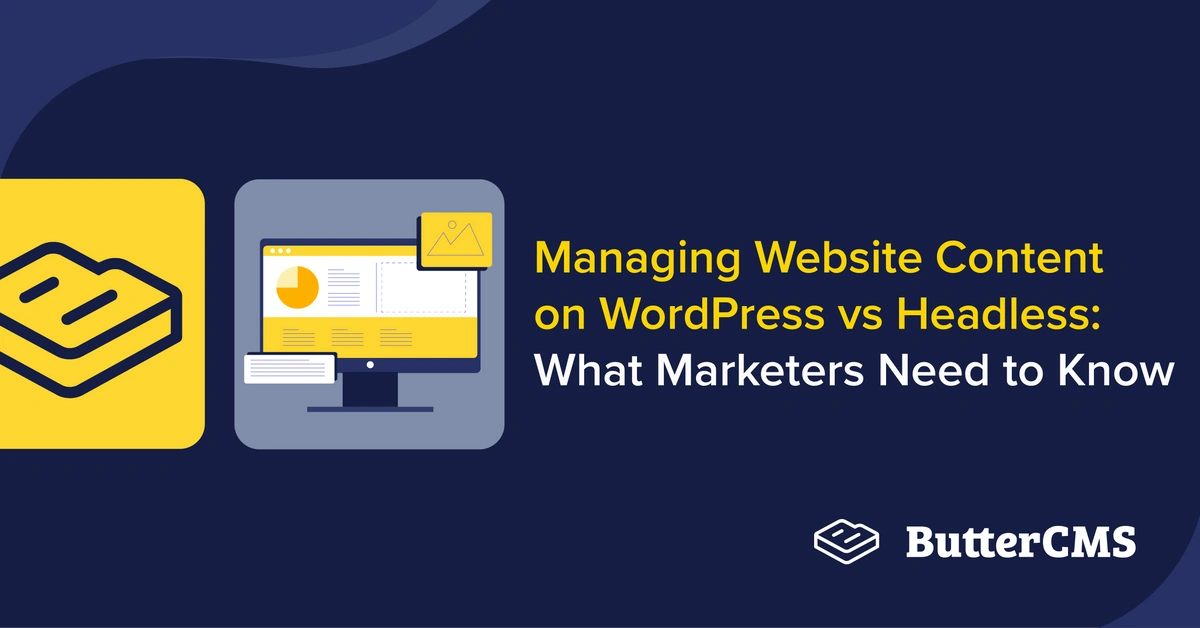
GSD
Managing Website Content On Wordpress vs Headless: Everything Marketers Need To Know
Posted by Marvel Ken on October 5, 2023
The value of content creation cannot be overstated; it is a crucial component in establishing a brand's online presence and thought leadership. It functions as a vehicle for offering your target audience useful information, driving traffic, generating leads, and aiding in the development of trust and credibility.
As crucial as content is to any brand, it needs a platform where it can be created, managed, and published—and that's the job of a content management system (CMS). A reliable and flexible CMS is important for several reasons, including simplifying content creation, increasing scalability, improving efficiency, and enhancing SEO.
In this article, we will discuss everything marketers need to know when it comes to managing website content in a headless CMS such as ButterCMS vs a traditional CMS like WordPress. After reading this you will have a better understanding of which solution is right for you and your marketing team.
Table of contents
First things first, what is a CMS?
A CMS is a software application or set of tools that allows users to create, manage, and publish digital content, typically for websites. An example you’re probably well acquainted with is the traditional CMS.
A traditional CMS, such as WordPress, is a monolithic CMS. That means everything is packaged together and the technical architecture tightly links the front-end (design and layout) to the backend (code and content database). This type of CMS typically operates on a server and users can access a web interface to make changes to their website.
A headless CMS, on the other hand, is another type of CMS solution that has been gaining steam in recent years. This is a backend-only CMS that acts primarily as a content repository. It exposes APIs that can be used to deliver content to various front-end channels such as websites, mobile apps, IoT devices, chatbots, and more—making it super flexible. One example of a headless CMS is ButterCMS.
Managing website content: Key differences between WordPress and a headless CMS
WordPress and a headless CMS option like ButterCMS provide two different approaches to CMSs. A traditional CMS like WordPress is designed to manage and display content through a single application, typically a website. With a traditional CMS, the front-end and back-end are coupled.
A headless CMS, on the other hand, is designed to allow marketers to manage content easily without being tied to a specific presentation layer or front-end. A headless CMS separates the content management functionality from the front-end, providing marketers with a powerful CMS that can be used across different platforms, channels, and devices. This allows for great flexibility in how the content is displayed, as it can be tailored to the needs of each front-end.
When it comes to managing content, there are several key differences between using WordPress and a headless CMS. These differences can impact content creation, operations, strategic management, consistency, SEO, asset management and distribution, integrations and functionality, and front-end rendering. Understanding these differences can help you choose the right platform for your specific content management needs.
Content creation and structuring
Content creation is the process of creating and organizing written, visual, or audio content for a specific audience and purpose. This can include creating blog posts, articles, social media posts, videos, podcasts, and other types of media.
Content structuring is the organization and presentation of content in a logical and coherent manner. This can include the use of headings, subheadings, bullet points, and the implementation of content modeling and structured content, along with other formatting and organizational techniques to make the content easier to read and understand for both the reader and search engines.
Content creation and structuring in WordPress
In WordPress, content creation and structure are managed through the use of posts and pages. Posts are pieces of content that are added to a blog and are displayed in reverse chronological order (newest at the top). They can be assigned categories and tags to help organize and classify them. Pages are static pieces of content that are meant to provide information about a particular subject or to serve a specific purpose. They can be used to add content such as an About page or a Contact page to a website.
To create a new post or page in WordPress, you will need to log in to the administration area of your website and go to the Posts or Pages section. From there, you can use the editor to add and format your content, add media (such as images or videos), and publish your post or page. You can also use the Categories and Tags options to organize your content and make it easier for users to find.
It is also possible to create a custom element that may not currently be present in WordPress, and to do so you would need to have knowledge of HTML, CSS, and PHP.
Content creation and structuring in a headless CMS
In a headless CMS, content creation and structuring is typically managed through a web-based interface. This interface is usually accessed by content editors or other authorized users who can create and edit content as well as organize it using features such as categories, tags, and other taxonomies.
Some headless CMSs also offer additional features to help with content creation and structuring, such as creating and managing content templates, scheduling content for publication, and integrating with other tools such as translation software or SEO analytics.
The content created and structured in a headless CMS is typically stored in a database and made available through APIs, allowing it to be displayed and used by any device or platform that can connect to the API, such as a website, mobile app, or smartwatch.
When creating and structuring content in a headless CMS like ButterCMS, we also have content modeling, which refers to the process of defining and organizing the structure and format of the content in a database. Content modeling involves configuring custom fields for the content you want to store and manage, such as blog posts, pages, components, collections, etc., that can then be used to power any other type of content you need to display on your website. By defining these custom fields, you can ensure that the content entered into ButterCMS is consistently structured and can be easily queried and displayed in various ways on your website.
Content operations
Content operations (also known as ContentOps) refers to the processes, systems, and tools that organizations use to create, manage, and deliver content. This can include activities such as content strategy, content creation, editing, publishing, distribution, and analysis. The goal of content operations is to help organizations efficiently produce high-quality content that meets the needs of their target audience and supports the overall business objectives.
Content operations in WordPress
Content operations in WordPress typically involve creating and managing content, such as blog posts, pages, and media, and organizing it in a way that is easy to find and access. WordPress provides a range of tools for managing content, including content scheduling, setting up automatic email notifications when new content is published, and configuring user roles and permissions. In addition, there are many plugins available that can help with managing content, such as content calendars, editorial workflows, and SEO tools. Relying on third-party plugins in WordPress for fundamental processes and workflows can pose various risks, including:
-
Security vulnerabilities: Third-party plugins may not receive regular updates and patches, which can open your website to hacking and other security breaches.
-
Compatibility issues: Installing a third-party plugin that is incompatible with your theme or other plugins can cause your website to break or malfunction.
-
Performance degradation: Using too many plugins or installing poorly coded plugins can slow down your website, leading to a negative user experience.
Content operations in a headless CMS
In a headless CMS, content operations are typically managed through a content management interface that allows individual content creators and teams to manage assets, modify images, and create/edit/publish content.
This interface is usually web-based and can be accessed by authorized users from any device with an internet connection.
ButterCMS provides a comprehensive set of features that enables you to create, manage, and deliver high-quality content that engages your audience and drives results. These features are:
-
WYSIWYG editor: ButterCMS provides a What You See Is What You Get (WYSIWYG) editor for creating and managing content. For example, a marketer working on a blog post for their company's website can use a WYSIWYG editor to easily add formatting, images, and links, allowing them to quickly create high-quality content that engages their audience.
-
Tags and custom page types: These provide additional flexibility and control over your content. Tags allow you to categorize and organize your content in a more granular way, making it easier for your audience to find and explore related topics. Custom page types, on the other hand, enable you to define custom fields and layouts for different types of content, such as blog posts, product pages, or event listings. With custom page types, you can tailor the editing experience to specific content types, making it more intuitive and efficient for your content creators.
-
Collections: Collections in ButterCMS are a way to organize and manage structured data that can be easily referenced by pages, thereby expanding the range of use cases that can be accomplished with ButterCMS. As a marketer, you can enhance the organization and navigation of your recipe website for cocktails by using collections as facets, which are filterable properties. For example, you can add categories to your pages, allowing your customers to easily find and explore different types of cocktails. By using this approach, you can provide a more streamlined and intuitive user experience that helps customers quickly discover their desired content, leading to increased engagement and satisfaction with your brand.
-
APIs: ButterCMS offers a range of RESTful APIs to help developers easily access and manipulate content within their ButterCMS account. These APIs include the Write API, which simplifies the process of localizing content across multiple platforms. The Blog Engine is another feature that provides pre-built APIs to quickly add a customized blog to a website. The Image API is also available, which integrates with Filestack and provides developers with a range of image transformation capabilities. This API enables developers to fetch images from ButterCMS and apply various transformations to ensure that images are displayed correctly on their website. By utilizing these APIs, developers can build custom applications and integrations that meet their specific business needs.
-
Workflow creation: ButterCMS provides workflow creation tools that enable content teams to streamline their content creation and approval processes. With ButterCMS, you can set up custom workflows to define specific stages for your content, such as drafting, editing, reviewing, and publishing. You can also set up automated notifications and approvals, ensuring that your team stays on track and that your content is always up-to-date and relevant. With workflow creation, you can increase efficiency, reduce errors, and improve the overall quality of your content.
-
Localization: Another important feature of ButterCMS is localization, which allows you to create and manage content in multiple languages. With ButterCMS, you can easily create and manage translations for your content, ensuring that your message is communicated clearly and effectively to your global audience. Localization can help you expand your reach, increase engagement, and build stronger relationships with your customers, regardless of where they are in the world.
ButterCMS provides a flexible and efficient solution to manage content throughout its content life cycle from inception to publication to long-term maintenance. You can also create tags and custom page types in ButterCMS as well (you can essentially do everything that was listed for WordPress within ButterCMS), making it a popular choice for many companies and developers.
Managing content strategically
Managing content strategically means that you are thinking about your content in a systematic and planned way, rather than just creating and publishing it haphazardly. This involves considering the goals you hope to achieve with your content, the channels you will use to distribute it, and the resources you have available to create and maintain it.
It also means regularly reviewing and evaluating the effectiveness of your content management processes and workflows, as well as the content itself, and making any necessary adjustments to ensure that you’re meeting your goals.
How to manage content strategically in WordPress
In WordPress, content is strategically managed through in-built resources and plugins. WordPress provides a number of tools to help you manage content strategically. Here are some specific ways you can use WordPress to manage content more effectively.
SEO optimization
WordPress includes a range of SEO optimization tools, such as Yoast SEO. These tools can be used to optimize your content for search engines and ensure that your content is visible on search engine result pages. WordPress provides access to an array of analytics tools, such as Jetpack, Google Analytics, and Facebook Insights. These tools can be used to measure the performance of your content, such as the number of page views, downloads, comments, and more. This will allow you to identify which content is performing well and which needs improvement.
Automated publishing
WordPress also allows you to automate the publishing process. You can set up a schedule for your content and WordPress will automatically publish it at the specified time. This can be helpful if you want to keep your content consistent without having to manually publish each post.
How to manage content strategically in a headless CMS
The separation of content creation and presentation in headless CMSs allows for more flexibility and agility in managing content. With this approach, content can be structured in a way that is optimized for different channels and devices, allowing for more dynamic content experiences. Additionally, because the content is not tied to a specific presentation layer, updates can be made more easily and quickly without affecting the entire system. All of these benefits ultimately lead to a more efficient content management process. Implementing structured content can also bring significant benefits to your website, including improved search engine optimization, easier content management, and increased website performance.
This approach makes it easier to manage content strategically because it allows for the same content to be used across multiple platforms without having to create it again for each one. This saves time and resources while ensuring a consistent message across all channels.
Using ButterCMS as an example, here are some key ways you can use a headless CMS to manage your content more strategically:
Leverage collections to manage content effectively
By using collections in your headless CMS, you can create specific data models for different content types, making it easier to organize and manage your website's content. For example, collections in ButterCMS refer to structured data tables that can be organized and referenced by multiple pages. With collections, users can store and display more complex data across their website pages from a single instance (common use cases include testimonials and product information). Collections can be queried directly from the ButterCMS API, which allows developers to programmatically retrieve and manipulate the data stored in the collections.
Leverage components to manage content effectively
Components, on the other hand, allow you to configure reusable elements that can be used across multiple pages, reducing the need to recreate the same sections multiple times and ensuring consistency in your website's design and layout. For example, components in ButterCMS are a powerful tool that can save marketers a lot of time and effort when creating and managing different types of pages on their websites. With components, you can configure a set of reusable components that can be used to build different pages. For example, if your e-commerce company is launching a new series of products and you want each one to have a landing page with a similar structure, you can create a page template using a set of pre-configured components
Leverage APIs to manage content effectively
When managing content, it's essential to consider where you intend to display it and the most effective way to do so.
Headless CMS APIs provide an easy way to manage and display content across multiple channels, including web, mobile, and IoT devices. With APIs, you can integrate your CMS with other services and systems, such as e-commerce platforms, marketing automation tools, and customer relationship management (CRM) software. This integration can help you increase productivity, and drive better results for your business. APIs let you manage your content programmatically, making it easier to automate content updates and track content performance.
With headless CMS components, collections, and APIs, marketers can streamline their website development process, reduce duplication of effort, and ensure consistency in the design and layout of their pages. Whether you're launching a new product line or updating your website's design, components, collections, and APIs can help you create professional-looking pages quickly and easily.
By leveraging these capabilities, you can manage your content more efficiently, reach a wider audience, and drive better results for your business.
Content consistency
Content consistency refers to the degree to which the information, language, and formatting of a piece of content, or a collection of related content, is consistent and cohesive. This can include using the same tone and language throughout the content, using the same formatting and layout for headings and paragraphs, and ensuring consistent flow and structure to the content.
Having consistent content is important because it helps to create a sense of coherence and unity. It also makes it easier for readers to understand and engage with the material, as well as helps establish the credibility and authority of the organization or individual producing it.
How content consistency is managed in WordPress
Content consistency in WordPress is managed through the use of templates and themes. WordPress themes provide the website with a standardized look and feel, while templates determine the layout and structure of specific pages or sections. The use of widgets, menus, and custom fields also helps to ensure content is consistently displayed uniformly across the site. Additionally, using plugins such as page builders, custom post types, and custom taxonomies can further aid in managing content consistency.
Maintaining consistency between a WordPress theme and a custom application can have several challenges. For instance, custom applications and WordPress themes may use different technologies and frameworks, making it difficult to integrate them seamlessly. We also have updating issues that can potentially break the integration and cause inconsistency when something is updated.
Additionally, a WordPress blog theme might not match your current application, and even if you fiddle with the WordPress blog code to match your current site, you're now managing two code bases. For marketers, this would mean they would need a developer involved for every website change they make.
How content consistency is managed in a headless CMS
To ensure content consistency in a headless CMS, it is important to have clear guidelines for how content should be structured and written. This can include standards for language, tone, and formatting. It is also important to have a system for reviewing and approving new content before it is published to ensure that it meets the desired standards.
For example, ButterCMS allows you to create and manage content in a centralized location and then access that content through APIs for use in your website, mobile app, or any other platform. To ensure consistency, ButterCMS provides a range of tools for defining and enforcing the structure of your content, such as custom content types, fields, and templates.
For instance, if you have a product catalog and want to ensure that product information, such as the name, description, and image, is displayed consistently across all channels, you could create a custom content type in ButterCMS with specific fields for these elements. You can then use the ButterCMS API to retrieve the product information and display it consistently on your website, mobile app, or any other platform.
Managing and enhancing SEO
Managing and enhancing SEO means improving a website's ranking and visibility in search engine results pages (SERPs). This is done through various tactics and strategies, including keyword research, content optimization, link building, technical SEO, and more. The goal of managing and enhancing SEO is to increase organic traffic to a website, which can lead to more leads, sales, and revenue. It's essential to regularly review and update your SEO efforts to ensure that your website performs well in searches and reaches your target audience.
How to manage and enhance SEO in WordPress
WordPress has built-in features and plugins for managing SEO. One of the key advantages of WordPress for SEO is its clean and well-structured code. Search engines like Google prefer websites with clean, organized, and semantic code, so WordPress is a great choice for those looking to improve their website's ranking. Another factor that makes WordPress SEO-friendly is its built-in taxonomy and permalink structure.
In addition to its basic SEO-friendly features, WordPress also has numerous plugins available to enhance its SEO capabilities. For example, the Yoast SEO plugin is one of the most popular SEO plugins available, offering features like keyword analysis, content analysis, and sitemap generation. However, be sure to keep in mind our earlier warnings about plugins.
How to manage and enhance SEO in a headless CMS
As you already know, a headless CMS, such as ButterCMS, separates the front-end (presentation layer) and back-end (content management layer) of a website. This allows marketers to manage and publish their content easily while developers have the flexibility to build the website using any technology they prefer.
This architecture can enhance SEO and benefit marketers in several ways:
-
Optimization: With a headless CMS, you can optimize the front-end application for fast performance by using modern web technologies like React, Vue.js, or Angular, which are designed to deliver fast and responsive user interfaces. This can improve website loading times and user experience, both of which are important for SEO.
-
Structured content: In ButterCMS, for example, structured data plays a crucial role in SEO as it facilitates Google's understanding of the content on your website, including individual pages and products. Google relies on comprehending the context of a page to display it in search results, and structured data serves as a means of communicating this information to Google. Essentially, by using structured data, you are effectively conversing with Google, informing it of the nature and purpose of your website.
Asset management and distribution
In the context of content, asset management refers to the organization and storage of digital assets such as images, videos, and documents. This can include tasks such as naming and organizing files, backing up assets, and setting permissions for access to the assets.
Asset distribution refers to the process of making assets available to be used by others. This can involve transferring assets to other individuals/teams or publishing assets on a website or other platform for public access.
How asset management and distribution are managed in WordPress
In WordPress, you can manage and distribute your content using the built-in tools provided by the platform.
To manage your content, you can use the WordPress dashboard to create/edit posts and pages and to organize your content using categories and tags. You can also use the dashboard to add media files, such as images and videos, to your site.
To distribute your content, you can use the built-in blogging and commenting tools to engage with your audience and encourage them to share your content on social media. You can also use plugins, such as Jetpack and WP Super Cache, to optimize your site for search engines and to improve its performance.
Finally, you can use the WordPress REST API to programmatically access and manipulate your content, making it easier to distribute your content across external applications.
How asset management and distribution are managed in a headless CMS
In a headless CMS, content asset management and distribution are typically handled through APIs, digital asset management (DAM), and content delivery networks (CDNs). An API allows the headless CMS to communicate with other systems and applications, such as a website or mobile app, and make content available for display (this also makes it easier to execute omnichannel marketing strategies).
When a content editor uploads an asset to the headless CMS, it is stored in a central repository and can also be accessed through the API. When a user requests content through a website or app, the API retrieves the appropriate assets from the repository and delivers them to the user's device for display.
A headless CMS also manages assets, such as images and videos, through a DAM system. The DAM system is responsible for storing, organizing, and retrieving the digital assets. A CDN is then used to distribute these assets to various locations around the world, ensuring fast and efficient delivery to users.
ButterCMS integrates with DAM systems and CDNs to manage and distribute its assets such as images and videos. The DAM system allows for the centralized storage, organization, and retrieval of digital assets. The CDN then serves these assets from various locations around the world, providing fast and efficient delivery to users, no matter where they are located.
Integrations and functionality
Integrations and functionality refer to the ways in which different types of content, such as text, images, and video, are incorporated into a website or application, and the features that allow users to interact with that content.
Content integrations might include embedding social media posts, integrating with a video hosting platform like YouTube or Vimeo, or pulling in data from a third-party API.
Functionality, on the other hand, refers to the features that allow users to interact with the content on the site or application. This could include things like commenting systems, search bars, or forms for submitting information.
Together, content integrations and functionality help to create a more engaging and interactive user experience, and can also help to increase the visibility and reach of a website or application.
Integration and functionality in WordPress
One of the key features of WordPress is its plugin architecture, which allows users to extend the functionality of their website with additional features and functionality. Plugins are small pieces of software that can be easily installed on a WordPress website and provide additional functionality, such as contact forms, SEO tools, and e-commerce functionality.
However, using third-party plugins and themes in WordPress can come with some risks. It is important to use plugins and themes that are regularly updated to ensure they are secure and compatible with the latest version of WordPress. Outdated plugins and themes can create security vulnerabilities that could be exploited by hackers. It is important to weigh the benefits and risks before using any third-party plugins in a WordPress website.
Integration and functionality in a headless CMS
A headless CMS is designed to provide content management functionality without being tied to a specific front-end or presentation layer. This means that the CMS must be able to handle integration and functionality in a variety of ways, depending on the needs of the particular application. Here are some of the ways that a headless CMS might handle integration and functionality:
-
Rest API: A headless CMS can handle integration and functionality by providing a content API that can be accessed by any front-end application or website. This API allows developers to retrieve and manipulate content stored in the CMS without being restricted to any specific technology stack or programming language. Since the CMS is headless, it doesn't handle any presentation logic or front-end functionality, which is left to the front-end application. This allows for greater flexibility and control over the user experience, as developers can choose the technologies and frameworks that best suit their needs.
-
Webhooks: A webhook is a way for the CMS to notify other systems or applications when new content is published or updated. This allows other systems to take action based on the new content, without requiring a direct API integration.
-
CDNs: Some headless CMS platforms offer built-in support for CDNs, which can cache content and deliver it quickly to end-users around the world. CDNs can also help to reduce the load on the CMS itself by serving content from edge locations closer to the end-user.
-
Microservices: A headless CMS can also be integrated with microservices architecture, which is a software development approach that breaks down complex applications into smaller, independent services that can be developed, deployed, and scaled independently. By using a headless CMS as a central repository for content, microservices can access and use the content as needed, making the development process more efficient and scalable. A headless CMS provides precise integration and functionality through its decoupled architecture, making it an optimal environment for integrating with other services and systems, including microservices architecture.
Front-end rendering
Front-end rendering refers to the process of rendering a user interface (UI) in a web browser. This is typically done using HTML, CSS, and JavaScript, which are languages used to structure, style, and manipulate the content displayed in a web browser.
Front-end rendering in WordPress
In WordPress, front-end rendering is managed through a combination of PHP code and WordPress templates. When a user visits a page on a WordPress site, the web server processes the PHP code and uses it to retrieve the necessary data from the database. It then uses this data to populate the WordPress templates, which determine the structure and layout of the page. Finally, the server sends the rendered HTML, CSS, and JavaScript to the user's web browser, which displays the page to the user.
WordPress uses a system of templates and template tags to control the rendering of pages. Template tags are PHP functions that are used to output specific pieces of information, such as the title of a post or the current date. Templates are made up of a combination of template tags, HTML, and CSS, and they control a page's overall structure and layout.
Front-end rendering in a headless CMS
In a headless CMS, the front-end rendering is typically managed by a separate application that consumes the content from the headless CMS through an API. This means that the front-end application is responsible for taking the content from the API and rendering it for the user to see.
The front-end application can be built using any number of technologies, such as a JavaScript framework like React, Angular, or Vue.js, or a server-side rendering solution like Next.js. The choice of technology will depend on the specific requirements and needs of the project.
One of the main benefits of a headless CMS is that the front-end and back-end are decoupled, which allows for greater flexibility in terms of how the content is presented to the user. This means that the front-end application can be easily changed or updated without affecting the CMS, and vice versa.
Easy ways to manage website content strategically and successfully
Handling various forms of content, such as internal, website, social media, and offline content, can be challenging, particularly in large organizations where responsibility for creation, ownership, and distribution is often spread out. This requires considering individuals, procedures, and technologies, and coordinating all the different types of content. In this section, we will discuss several ways to manage website content strategically and successfully.
Develop your digital web strategy
A digital web strategy could be a short-term or long-term written plan created by a company to improve its digital presence. The goal is to enhance engagement and increase conversions and revenue through different digital channels. For example, if one of your online goals is to increase online customers to your website, your strategy would focus on covering all available aspects of online customer attraction—from the CMS to the eCommerce platform you use down to your customer service policies. Below are the key components of a digital web strategy:
- Define your target audience: Understanding who your website is meant for is crucial for developing a content strategy that will resonate with them. Conducting market research can help you identify your target audience's demographics, needs, and preferences.
- Set clear goals: Having specific goals in mind for your website can help guide the development of your content strategy. These goals can include increasing website traffic, improving lead generation, or boosting online sales.
- Conduct an audit of your existing content: Before creating new content, it's important to take stock of what you already have. An audit will help you identify any gaps in your content and areas where you can repurpose existing content.
- Create a content calendar: Once you have a good understanding of your target audience, goals, and existing content, you can begin planning out your content calendar. A content calendar will help you stay organized and ensure that you're regularly publishing fresh, relevant content.
Focus on personalization and scalability
Personalization and scalability are both important factors to consider when strategically managing content on a website. Personalization refers to the ability to tailor content to specific audiences and their preferences. This includes targeting content to different user segments, as well as creating content that can be customized for each user. Scalability refers to the ability to handle and manage large amounts of content efficiently. This involves creating content that can be easily updated and maintained and ensuring that the CMS can handle large numbers of users. By considering both of these factors when managing website content, you can ensure that the content is effective, engaging, and relevant to your audience. Personalization and scalability can be implemented in both WordPress and a headless CMS, but the approaches differ due to the different architectures.
Personalization and scalability in WordPress
Personalization:
Personalization is possible on WordPress through the use of plugins such as WPForms, OptinMonster, and WooCommerce, which offer a variety of features to create customized experiences for users. These plugins can help tailor content, offers, and recommendations based on user behavior, preferences, and location. WordPress also offers customization options for themes. You can create different versions of pages or posts, customized for different users based on their location, device, or behavior. With these options, you can create a personalized experience that caters to your target audience and enhances their engagement with your website.
Scalability:
-
Caching: WordPress sites can be cached to reduce server load and improve page load times. Popular caching plugins include WP Super Cache and W3 Total Cache.
-
Load balancing: Load balancing can be implemented to distribute traffic across multiple servers to improve site performance and scalability. Tools like Amazon Web Services (AWS) Elastic Load Balancer can be used for this purpose.
Personalization and scalability in a headless CMS
Personalization:
-
API: With a headless CMS, you can use APIs to access and personalize content based on user behavior, device, and location.
-
Third-party services: Third-party services such as Google Analytics, Intercom, and HubSpot can be integrated with a headless CMS to provide personalized experiences.
Scalability:
-
Microservices: Headless CMS is often built using microservices architecture, which allows for independent scaling of different services.
-
Cloud hosting: Cloud hosting can be used to scale headless CMS services as needed. Tools like AWS and Google Cloud Platform (GCP) offer scalable hosting options.
Take advantage of structured content
Let's begin with a definition, structured content is content that has been organized into separate components in a way that is predictable and ready to be used for almost any interface. Implementing structured content often requires you to break your content down into the smallest yet most meaningful components (in the case of a blog article this might be the title, the author byline, or an SEO description). This allows for the same core pieces of content to be reused and repurposed throughout a website.
When you use structured content, you're also providing Google and other search engines with a clear and concise description of your website's content, making it easier for their algorithms to match your content with relevant search queries. This means your website has a better chance of appearing higher in the SERPs—ultimately leading to increased visibility and traffic. It's like having a conversation with Google and explaining what your website is all about in a language that it can easily comprehend.
Taking advantage of structured content can help you manage your website's content strategically and successfully in several ways:
-
Improved organization: Structured content helps you organize your website's content in a clear and logical manner, making it easier for visitors to find what they're looking for. This can improve the user experience and increase the chances of visitors engaging with your content and converting into customers.
-
Enhanced searchability: Structured content can be optimized for search engines, making it easier for people to find your website when they search for relevant keywords. This can increase your visibility and drive more traffic to your website.
-
Easier content management: Structured content can make it easier to manage and maintain your website's content. By using a consistent format, you can automate many of the tasks associated with content management, such as publishing and updating content.
-
Increased reuse and repurposing: Structured content can be easily reused and repurposed for different channels and devices. This can save you time and effort when creating content for different platforms, and ensure consistency across all of your channels.
You can achieve the benefits of the structured content described above by executing the following:
-
Define your content types
-
Create a content model
-
Establish content standards
-
Implement a future-proof CMS
-
Tag and categorize the content
-
Monitor and analyze content performance
Organize your content processes
Organizing your content processes is an important step in managing website content strategically and successfully. In this section, we will be discussing how organizing your content helps you manage your content strategically.
Here are a few ways you can organize your content processes:
Identify key workflows and processes
To organize your content processes, you should first identify the key workflows and processes that are critical to your content operations. This can include tasks such as creating, editing, reviewing, publishing, and archiving content. Once you have identified these key workflows and processes, you can develop a system to manage and track them. Here are a few best practices that can help you organize your content processes:
-
Use a project management tool
-
Set up a content review and approval process
-
Establish clear roles and responsibilities
-
Implement a version control system
-
Archive and backup your content
It's also important to note that the best way to maintain these processes and workflows is through continuous review and adaptation, which may need to adapt over time. Regular check-ins, evaluations, and updating will help to keep the workflows and processes organized and effective.
Establish and document core content processes
Establishing and documenting content processes is an important part of strategic content management. Content processes refer to the steps and procedures that are followed in order to create, publish, and maintain content. Having clear and well-defined processes in place can help ensure that content is created and distributed in a consistent and efficient manner and that it meets the needs of both the organization and its audience.
There are a variety of different content processes that an organization may need to have in place, depending on the types of content they create and the channels they use to distribute it. Some common content processes include:
-
Content creation
-
Content publishing
-
Content maintenance
-
Content workflows (such as approval and publishing workflows.)
Documenting these processes makes it easy to onboard new team members. It also enables teams to work more efficiently together and allows an organization to track and measure the performance of their content.
Having these processes in place can help an organization create high-quality content that is consistent with its brand and messaging and that effectively reaches and engages its target audience.
Categorize and organize content so you can get the most out of it
Categorizing and organizing content is an important step in managing your content and making it easily accessible to those who need it. There are several ways to organize your content, depending on your goals and the type of content you are working with.
One way to organize content is to create a content taxonomy, which is a hierarchical system of categories and subcategories that is used to classify and label content. This can be done by analyzing your content and identifying common themes, topics, and keywords that are relevant to your audience. Once these themes and topics have been identified, you can create a tree-like structure with top-level categories and subcategories that group related content together.
Another way to organize content is to use metadata, which is information about a piece of content that describes its characteristics and properties. Metadata can include information such as the author, publication date, keywords, and content type. By tagging your content with metadata, you can make it easier to search for and filter content based on specific criteria.
A third way to organize your content is to use a content calendar. A content calendar is a schedule that outlines when and where different types of content will be published. This allows you to plan ahead, coordinate with other team members, and ensure that your content is consistent with your overall marketing strategy.
The way that you organize your content should be tailored to your specific needs and goals. However, regardless of the specific approach you choose, it is important to have a clear and consistent system in place for storing and categorizing your content. This will make it easier to find and use and will help you ensure that your content is reaching the right audience at the right time.
Overall, having a solid content organization strategy in place is the key to optimizing your content creation and distribution process. It saves time and resources, which can help you to achieve your business goals effectively.
By organizing your content processes and implementing a content strategy, you can ensure that your website content is aligned with your business goals and effectively reaches your target audience.
Select tech that will keep you running seamlessly
In this section, we will discuss the technologies that will help keep you running seamlessly and also elaborate on the importance of using future-proof technologies and other marketing tools. There are several technologies that can help you manage your website content strategically and successfully. Here are a few that may be helpful:
- Headless CMS: A headless CMS allows you to create, manage, and publish digital content. A typical example is ButterCMS. This platform makes it easy to create and organize content.
- Analytics tools: Analytics tools such as Google Analytics and Adobe Analytics can help you track website traffic, user behavior, and other metrics. This information can be used to inform your content strategy by identifying which content is most popular, which pages are most frequently visited, and which pages are causing users to leave your site.
- SEO tools: SEO tools can help you optimize your website's content for search engines so that it is more likely to appear at the top of search results. This can include keyword research tools, which can help you identify keywords that are relevant to your business, as well as tools that can help you track your website's rankings for specific keywords.
- Social media management platforms: A social media management platform like HootSuite, Sprout Social, or Buffer can help you manage multiple social media accounts, schedule posts, and track metrics of social media accounts. These platforms can help you promote your content and reach a wider audience.
- Collaboration and project management tools: Platforms like Trello, Asana, and Basecamp can help you and your team to collaborate more effectively and stay organized. These tools can help you assign tasks, set deadlines, and track progress, which can be especially useful when working on content projects with multiple stakeholders.
- Email marketing: Email marketing platforms like MailChimp, Constant Contact, and Campaign Monitor can help you create and send targeted email campaigns to promote your content and drive traffic to your website.
These are just a few examples of technologies that can help you manage website content strategically and successfully. Ultimately, the best solution will depend on your specific needs and the resources you have available.
The importance of using future-proof technologies and other marketing tools for managing website content strategically and successfully includes:
-
Increased efficiency and productivity: Future-proof technologies allow for streamlining content management processes, reducing manual labor, and increasing overall productivity.
-
Improved user experience: By implementing modern and user-friendly technologies, websites can provide a better experience for their audience, leading to increased engagement and conversions.
-
Flexibility and scalability: Future-proof technologies can be easily updated and expanded, allowing for continued growth and success as the website evolves.
-
Competitive advantage: Utilizing cutting-edge technologies and marketing tools can give businesses a competitive advantage in their industry.
-
Data analysis and insights: Advanced analytics tools allow for in-depth website traffic and user behavior analysis, providing valuable insights for informed decision-making and continuous optimization.
-
Better search engine ranking: Implementing SEO strategies and using search engine-friendly technologies can improve a website's ranking in search results, increasing visibility and driving traffic.
Final thoughts
The management of website content is crucial to the success of any website. Whether you are using a WordPress content management system or a headless CMS, having a clear strategy and implementing effective content management practices will help you achieve your desired results. In this article, we had time to cover how website content is managed in WordPress and Headless CMS, and we also talked about easy ways to manage content strategically and successfully.
Both WordPress and headless CMSs have their own advantages and disadvantages. WordPress is a simple, cost-effective, and scalable solution that doesn't require much technical expertise, but limits technological options. On the other hand, a headless CMS provides quick, secure, and cross-platform flexibility but requires design, front-end, and back-end development skills.
With the increasing trend of multi-experience user journeys, a headless CMS has the potential to shape the future of content management by allowing deeper engagement with customers across various channels and devices. To get started with ButterCMS, you can visit the documentation page, which has a large variety of stacks you can start with. Thanks for reading.
For more on Using Butter CMS VS Wordpress, read: Headless To Wordpress: How To Use Their Blog Data In Your Api
Do you want your product or marketing team to test Butter CMS? We can set up a live demo to walk your team through the fast, easy-to-use interface.
ButterCMS is the #1 rated Headless CMS
Related articles
Don’t miss a single post
Get our latest articles, stay updated!
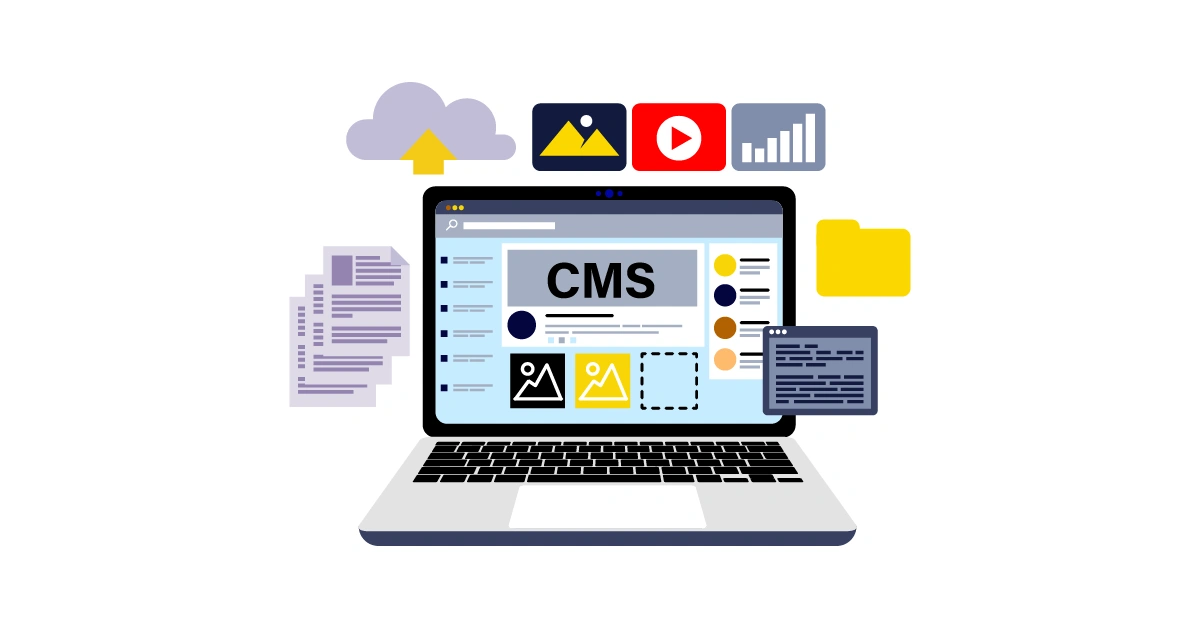
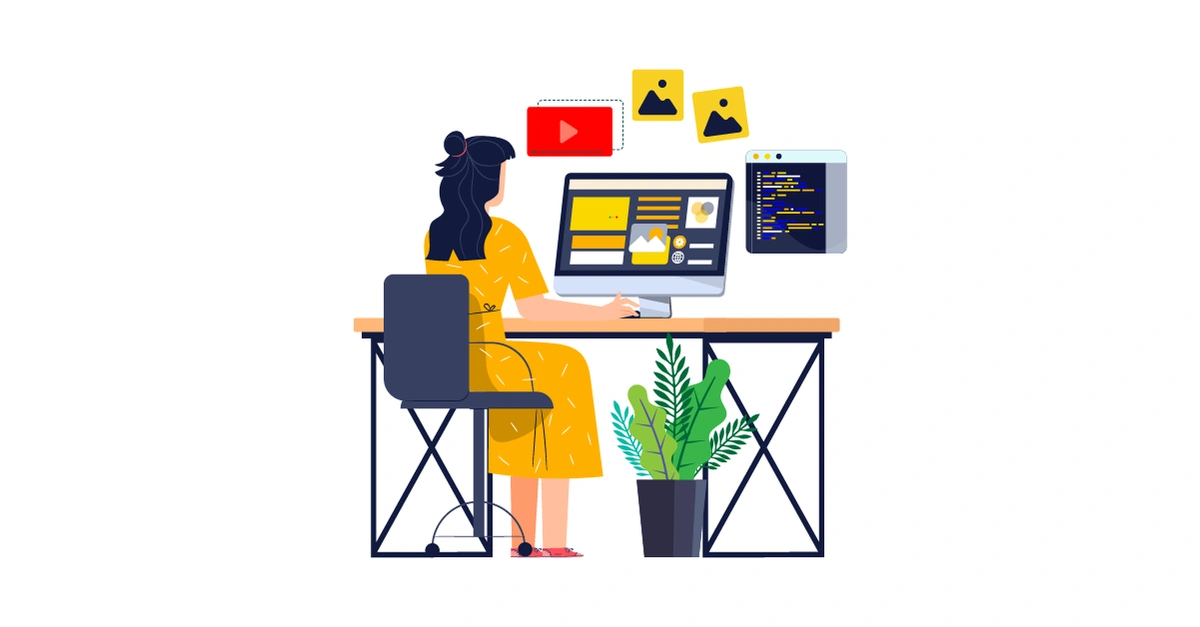
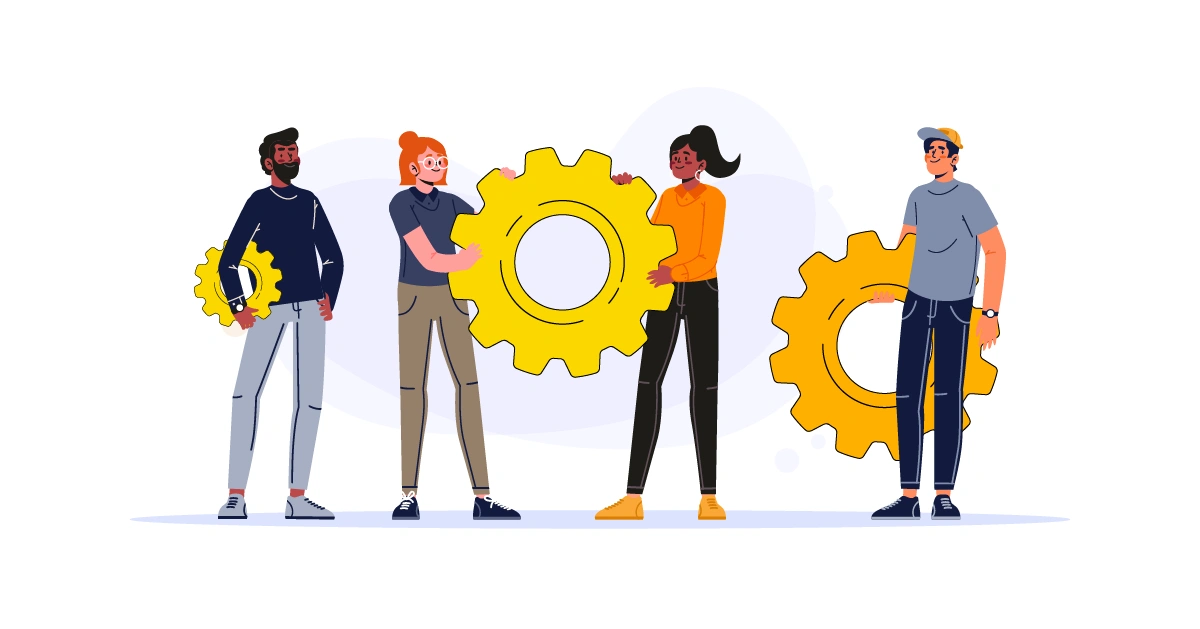

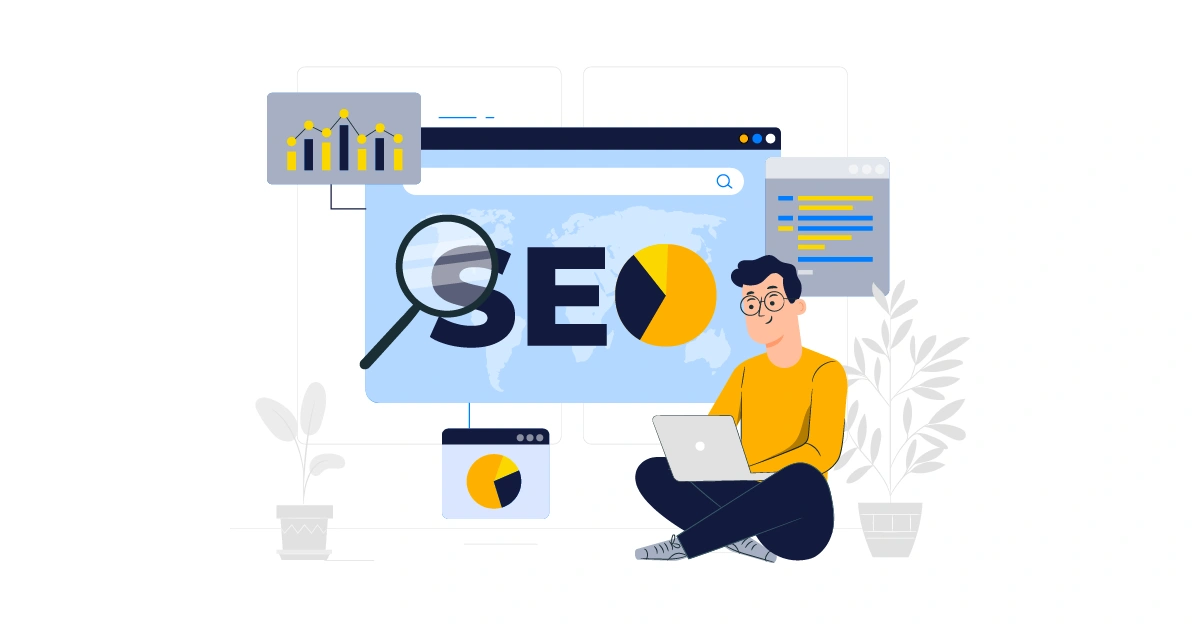
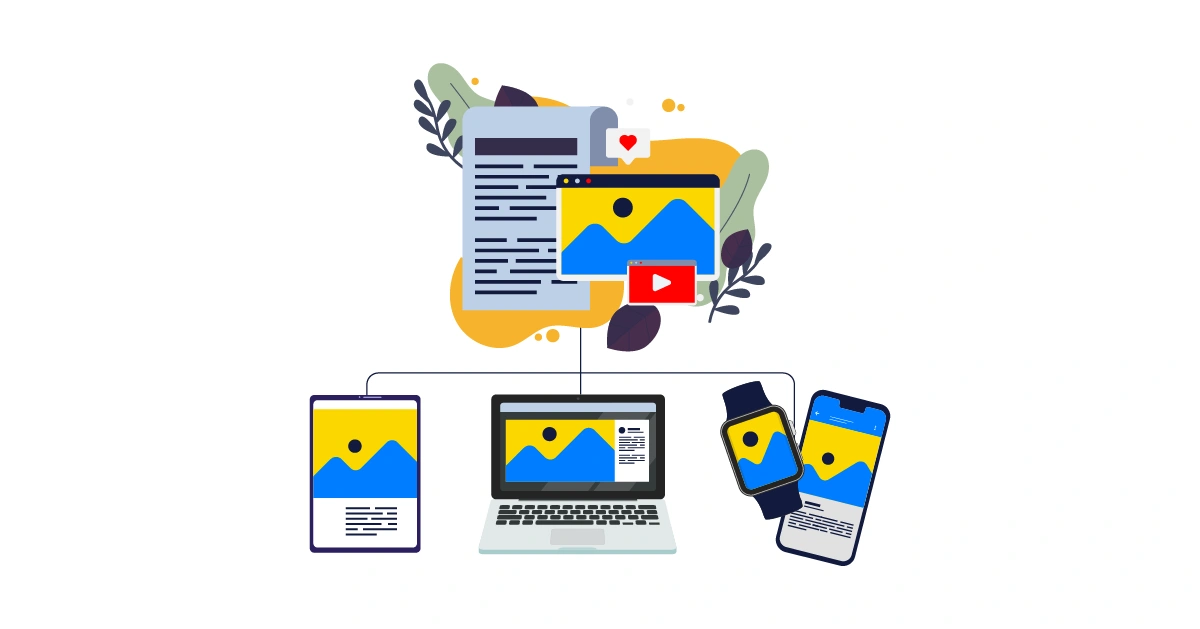
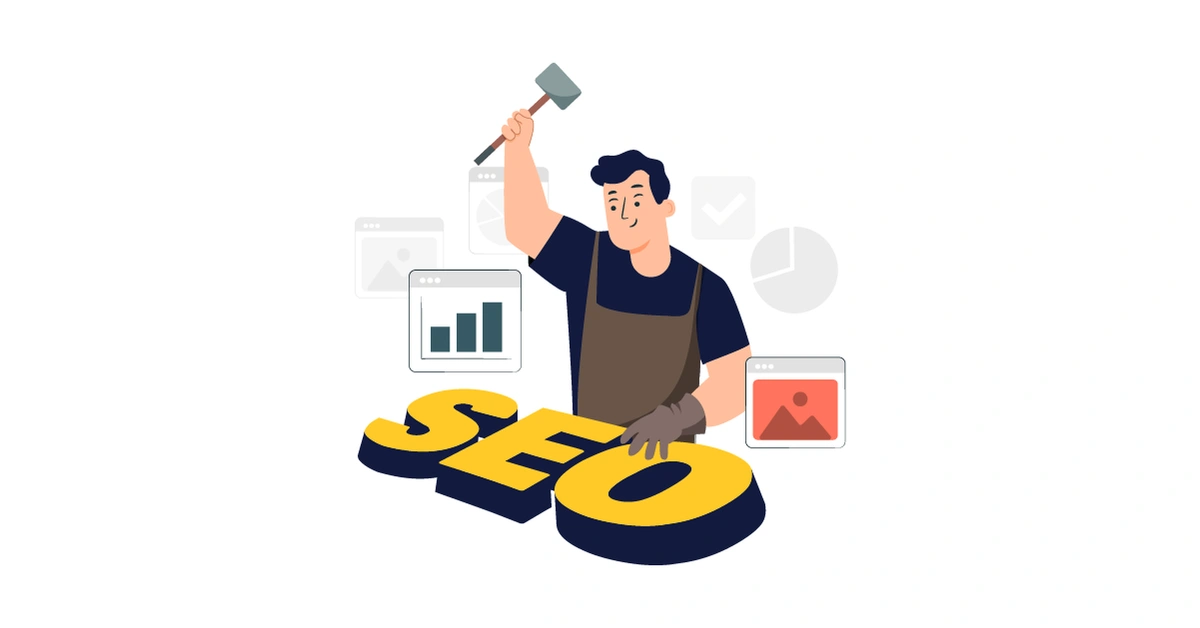
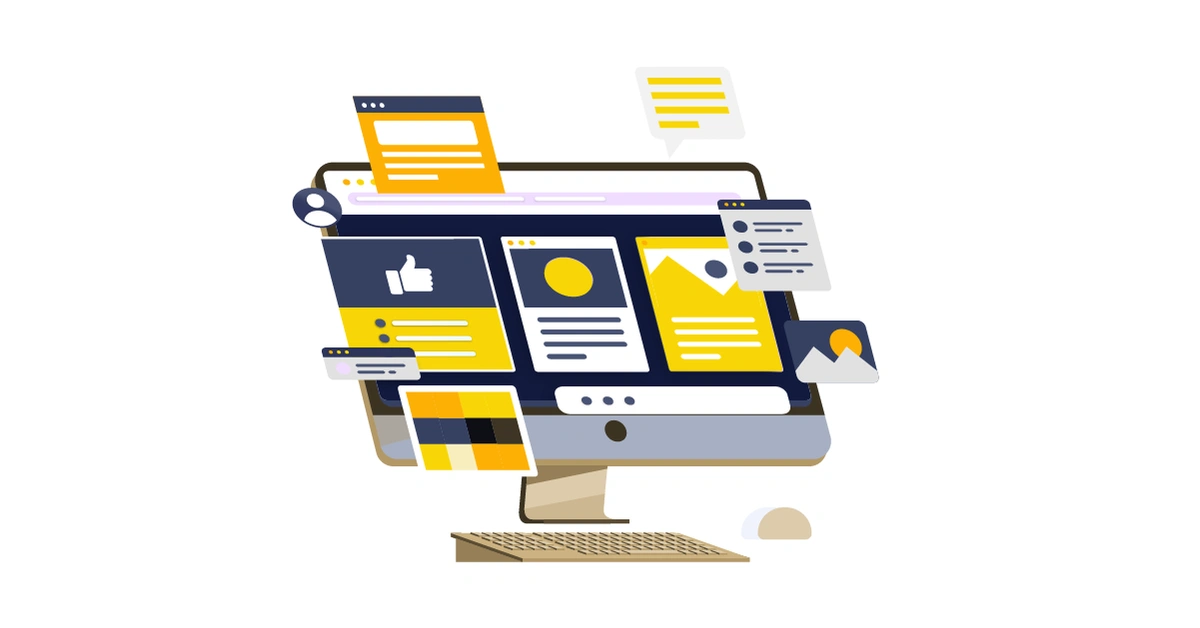















Marvel is a front-end developer and a huge fan of new technologies. He enjoys trying new things out and understanding them so he can teach and share them with others.